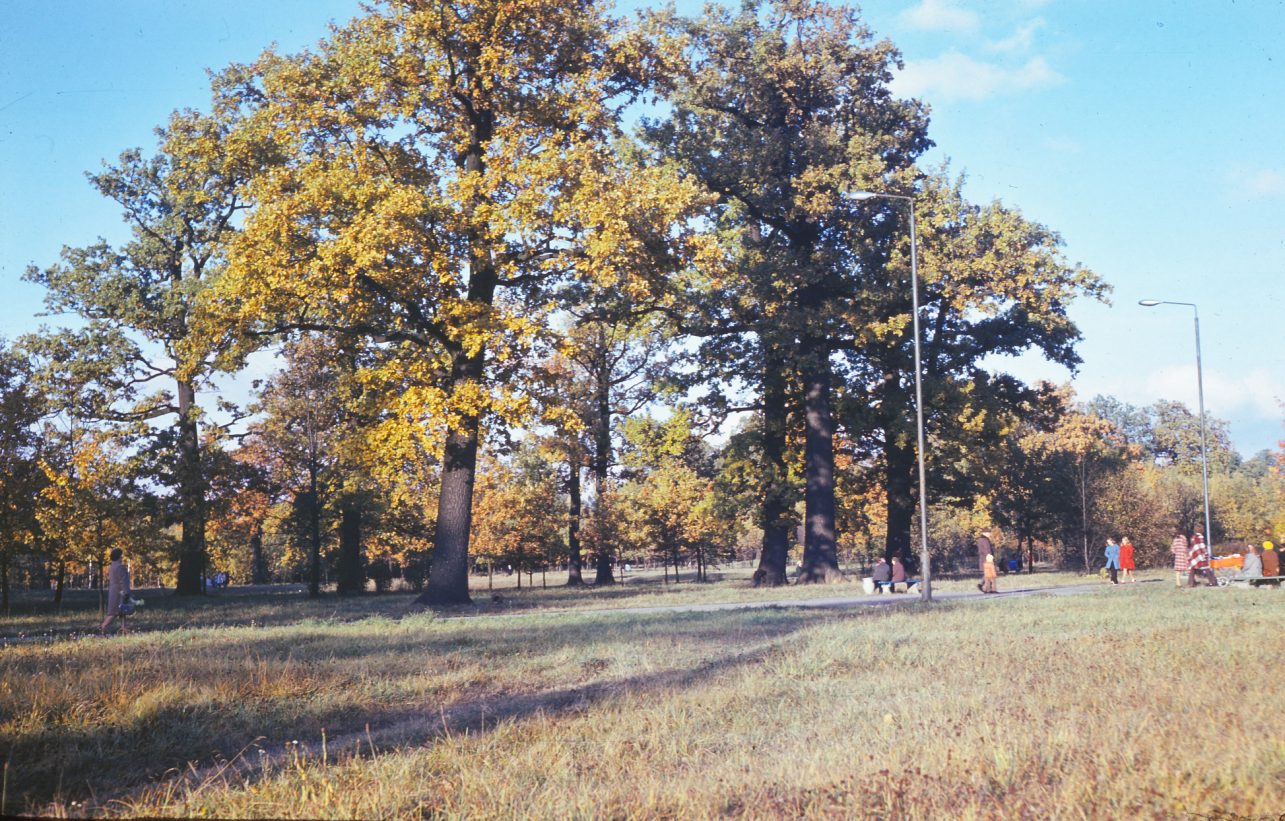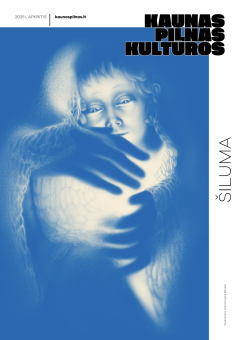Let’s begin this story with an exercise. Tilt your head back and watch the sky through the branches of the trees. After a few minutes, you should be overcome by a sense of wonder and inspiration. As I heard from archaeologist Prof. Dr. Vykintas Vaitkevičius, psychotherapists in England have confirmed that such a simple action is indeed deeply relaxing.
I first heard about the hikes led by V. Vaitkevičius, a laureate of the National Jonas Basanavičius Prize who works at Klaipėda University, from a friend who had settled near Ąžuolynas – the Oak Grove – a few years prior. Thanks to the scientist researching Baltic sacred sites, she learned more about this living treasure, which is significantly older than Kaunas itself, than the average passerby. Truth be told, the word “learn” might not be entirely fitting here – Vykintas himself suggests that to truly establish a connection with Ąžuolynas, one must enter it having “folded up all beliefs and stereotypes.”
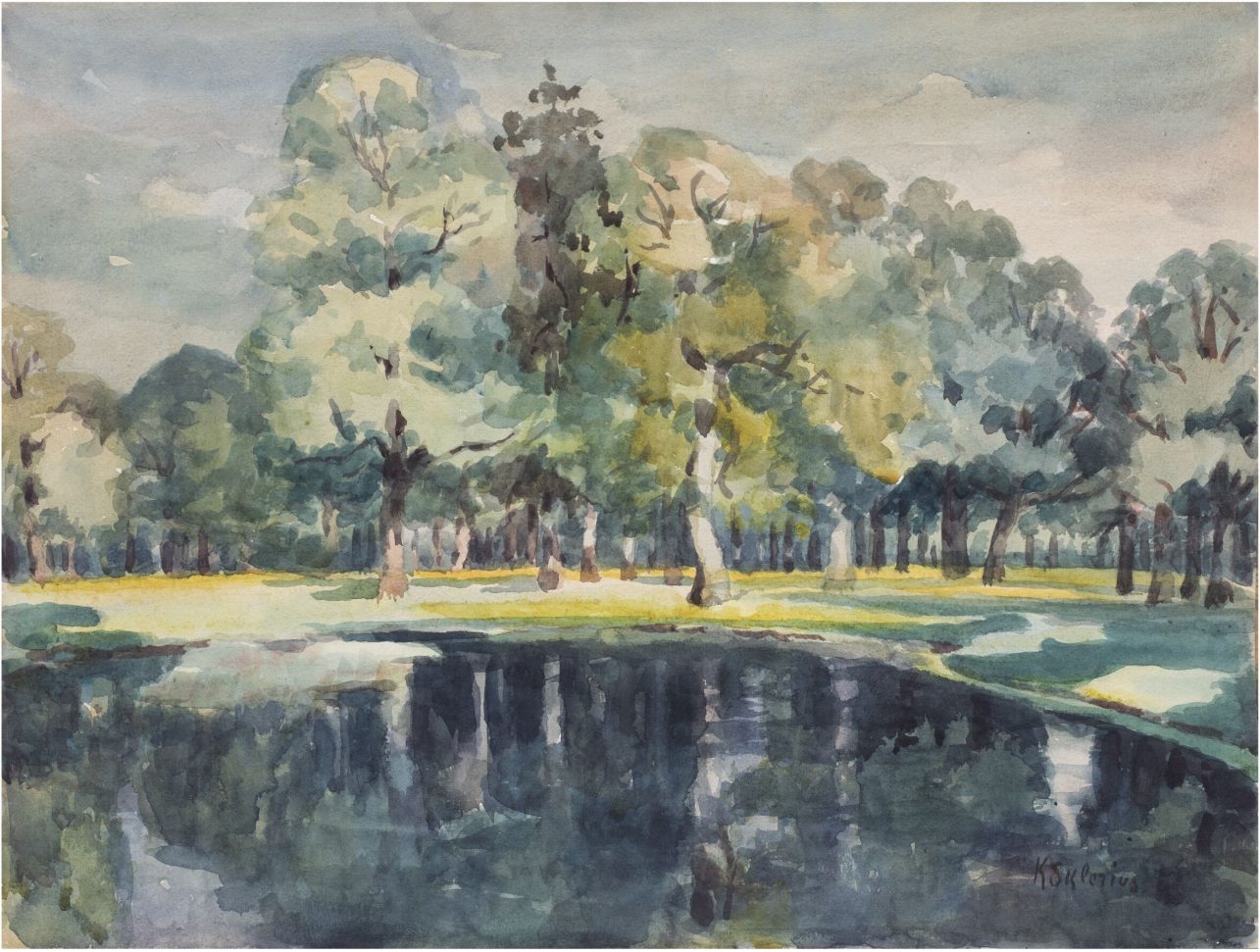
Birthplace and Treasure
“I was born here, in Ąžuolynas, in Perkūnas Square – this is my birthplace, I grew up here,” says Vykintas. His conscious path into the history of Ąžuolynas began in his adolescence, when his father, a historian of photography, took him to visit the blind photographer Stanislovas Lukošius. “After school, I would go to help him organize his archives. I would describe what was visible in the old negatives, and he, guided by memory, would recognize the places and people. It was S. Lukošius, constantly comparing the Kaunas of the past with the present, who revealed the historical development of the city to me.” By the time he finished school, Vykintas already firmly understood: Ąžuolynas is not just a park or a forest. Although studies in Vilnius and starting a family later pulled him away, he had to return a few years ago when he needed to care for his father.
“That return became not just a physical presence but a rediscovery of self. I started dreaming of Ąžuolynas again; I felt that my very identity was simply permeated by those oaks,” the scientist recounts. “This personal restoration of connection coincided with professional achievements: I had to prepare a dossier through which the traditional bond between humans and the forest was included in the inventory of intangible cultural heritage values. We understood and articulated why this place is a treasure of our nation.”
A Bit of History
What we call the Kaunas Ąžuolynas today is a city park, a territory of almost 90 hectares, with oaks dominating a little more than a third of it. Now it is the very center of Kaunas, surrounded by the Žaliakalnis districts studded with prestigious interwar villas. But, as archaeological research shows, the Girstupis Valley, located in the historical core of Ąžuolynas, was considered a sacred site even before history began to be written.
Later, this forest, like others, became the property of the Grand Duke of Lithuania. In 1463, with the permission of Grand Duke Casimir, the people of Kaunas were allowed to graze livestock and mow meadows from the city all the way to the Girstupis stream, thus making Ąžuolynas official pastureland. In the 16th century, part of Ąžuolynas passed to the Church of the Holy Cross, which, along with all its holdings, eventually went to the Carmelite monks.
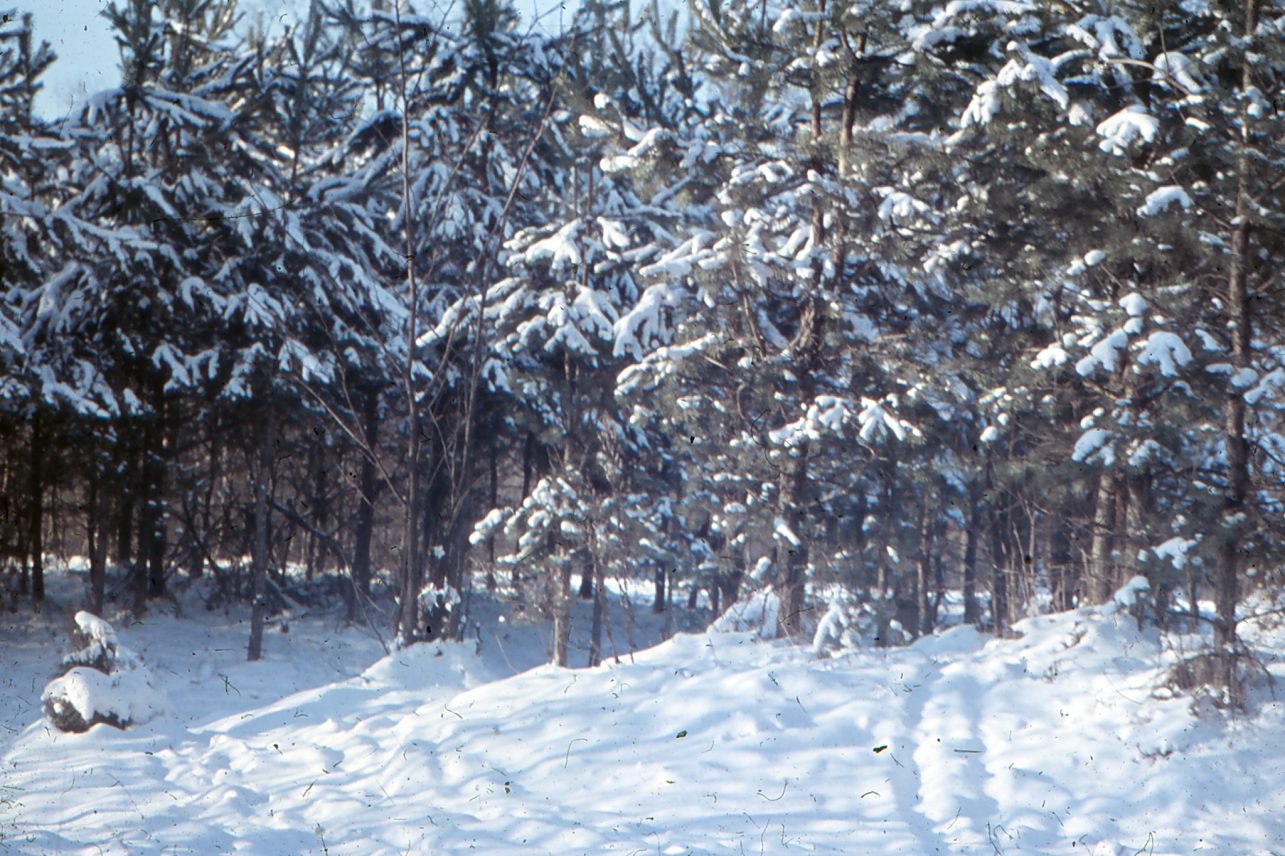
Urbanization has been felt in Ąžuolynas since the forest officially became the property of the City of Kaunas and soon began to transform into a leisure space for citizens. The City Garden was established here in 1872. In the late 19th century, part of the forest was destroyed by the construction of the Kaunas Fortress. Today, Ąžuolynas is ringed by noisy transport axes, and a stadium that periodically clogs up Žaliakalnis operates right alongside it. But let’s leave urban development for another time; right now, let’s dive deeper into the forest.
What is More Profitable?
Yes, a forest can be cut down for quick profit. However, the history of Ąžuolynas raises a different question: is the forest a disposable resource or a value that can bring joy for a lifetime? “Today, the whole world is talking about the intangible services of the forest. Let’s try to put a price on how much money people save the health insurance funds by strengthening their health in Ąžuolynas. Wealthy nations realized long ago that investing in a healthy lifestyle is cheaper than treating diseases,” says my interviewee.
According to Vykintas, the existential value of the forest is no less important. For many people, the mere knowledge that a forest dear to them simply EXISTS provides psychological security and balance: “When a forest is cut down, it all turns into a trauma that people sometimes equate to war.”
The professor recalls how, while conducting historical research on Ąžuolynas (incidentally, Lithuanian historians are generally not interested in forests in this sense – unless from a forestry perspective), he opened an 18th-century account book of the Carmelite monks kept in the Vrublevskis Library: “I expected to find entries about profit from Ąžuolynas timber. But I found nothing of the sort. The monks did not cut down Ąžuolynas; they bought firewood from elsewhere, and they only rented out Ąžuolynas itself for grazing and haymaking. This made a huge impression on me. Imagine: you have the opportunity, but for reasons unknown to us today, you do not use it. That is how Ąžuolynas waited for us.”
Mickiewicz Felt It Too
The Girstupis stream valley located in Ąžuolynas has long been named after Adam Mickiewicz. After talking about the mindful Carmelites, one wants to ask Vykintas – presumably, it was no accident that the poet loved being here too?
“Undoubtedly. He was young, a romantic to the marrow of his bones, and an idealist. The owner of the Romainiai manor first brought him to the valley, but later the poet started visiting it on his own – both alone and with his beloved Karolina Kowalska,” the Kaunas native relates. It was Karolina who suggested christening the valley with the name of the poet who left Kaunas after a few years of teaching. Here you will also see a stone with the initials A. M. and the year carved by the poet’s friends – 1823.
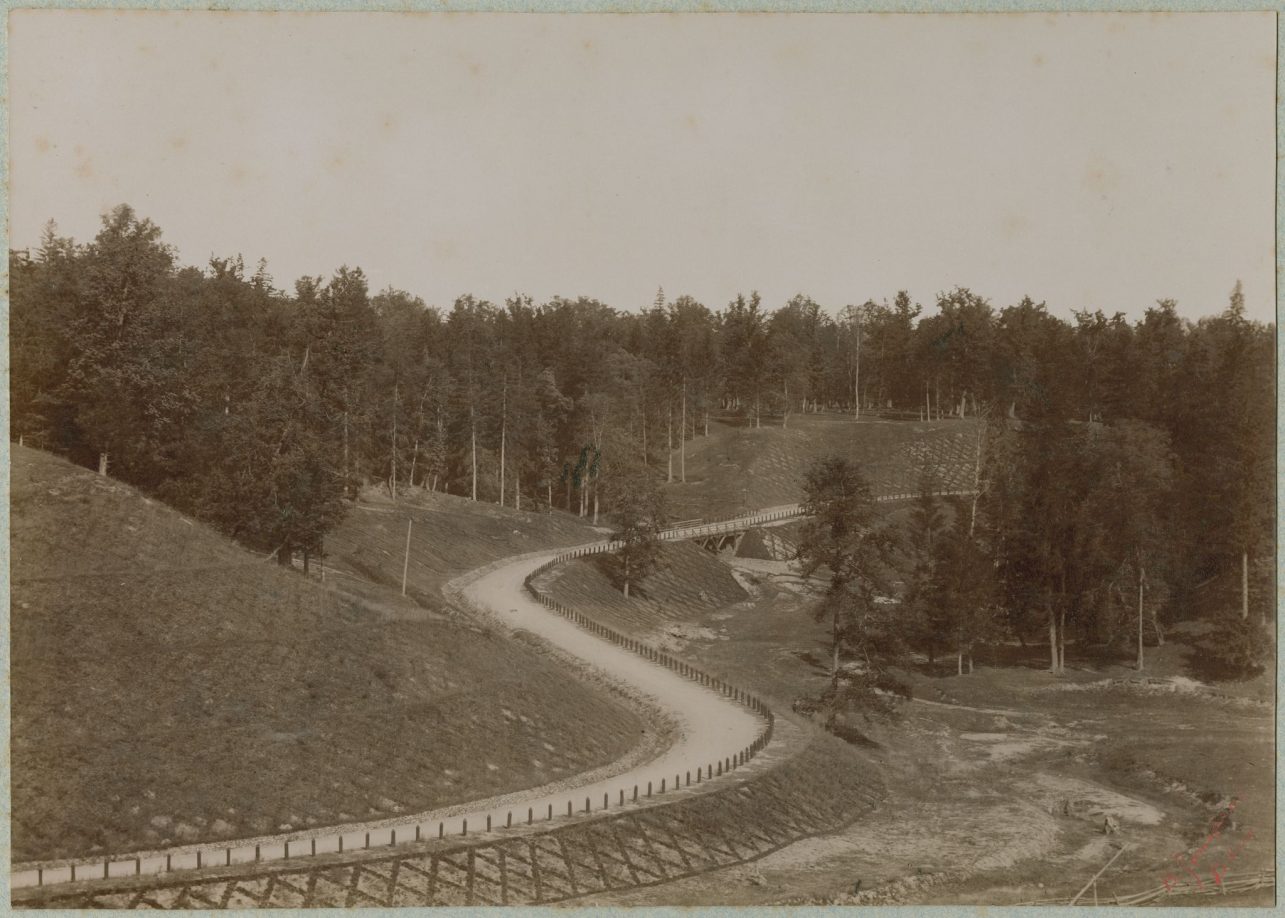
According to the scientist, Mickiewicz could have not only intuitively felt the special spirit of this place but also adopted the local tradition. For instance, he communicated closely with the then-ranger of Ąžuolynas, Joakimas Čelkevičius, who likely knew the old stories of the valley. And who, in turn, helped the poet by passing on secret notes.
“In his poetry, Mickiewicz wrote about undinės – that’s how it is translated, but in reality, they are laumės (fairies or woodland spirits),” states V. Vaitkevičius, drawing attention to the surrounding mythological landscape: there is the Maiden’s Island in the Nemunas, and Laumėnai on the other bank. This indicates that the poet perfectly sensed and recorded the ancient, mythical layer of the locality.
The valley familiar to us today is merely a remnant of a once vast territory. Archaeological finds discovered there – Bronze Age axes – testify to the oldest traces of sanctity. “And this case is not closed yet,” Vykintas intrigues us. “Recently, a woman told me she found another significant stone that might be mentioned in old archaeological descriptions. I haven’t had time to verify it, but it seems that Ąžuolynas still has secrets.”
It is obvious that people are vitally important carriers and continuers of the history of Ąžuolynas. “During one tour, an older generation resident of Kaunas recounted how, in his childhood, his mother used to take him to the spring of the Girstupis Valley to drink or just to bring water home,” Vykintas recalls. “For me, this was a very important, albeit indirect, confirmation. This spring flows exactly to the east, towards the sun, so I have almost no doubt that special properties were previously attributed to its water.” I hope this story will make it into a book on the history of Ąžuolynas that will surely be published one day. I asked if such a book exists in Vykintas Vaitkevičius’s dreams. It does!
Practical Advice
Do you remember the exercise that served as the introduction to this text? In fact, I asked Vykintas how to experience Ąžuolynas if, until now, it has been nothing more than a park through which one reaches the university or the stadium.
“Go into Ąžuolynas as if you were going there for the first time. Hide your phone and follow your senses. Don’t be afraid to get lost – the boundaries of Ąžuolynas are very clear. Go simply looking for a relationship with this place. If you have a dog – great, let it be your guide. It can lead you to where it feels is most important at that moment. Choose a time when there are fewer people – early morning or later in the evening – so there are as few distractions as possible. And then simply be. Look for your tree, raise your eyes to its top. If it’s autumn – pick up a fallen leaf; if it’s spring – watch a waking bud. This simple focusing of attention is very important. It is also the basis of forest therapy. We already have the first certified specialists in this therapy, and some doctors even write prescriptions – to go to the forest such and such times a week. If you lack the strength to do this on your own, you can join ‘forest bathing’ groups that teach how to be in the forest and forge a connection with it. This opens up a completely different, often unknown world to us.”
